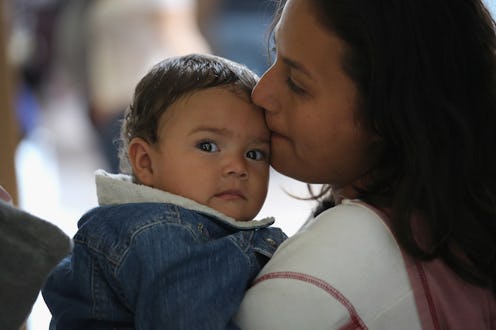News
The Government Said The "Lost" Migrant Children Aren’t Really Lost At All

Following reports that the United States government had lost 1,500 migrant children, the Department of Health & Human Services (HHS) is countering that argument. In a statement from Deputy Secretary for HHS Eric Hargan, the government said the migrant children are not lost after all.
Hargan said the kids' sponsors — often immediate family — have simply not returned phone calls to the Office of Refugee Resettlement, and he presented this situation as a problem for increasing undocumented immigration.
But the HHS explanation for what has happened with these "unaccompanied alien children" — or "UAC" as the government calls them — largely mirrors the one given by immigrant rights advocates. Lawyer and reporter Josie Duffy Rice, of the Fair Justice Project, made the same argument on Twitter this Sunday when she wrote that the statistic of 1,475 kids being lost was a total misinterpretation.
Here is what HHS said in its statement:
These children are not "lost"; their sponsors — who are usually parents or family members and in all cases have been vetted for criminality and ability to provide for them — simply did not respond or could not be reached when this voluntary call was made. While there are many possible reasons for this, in many cases sponsors cannot be reached because they themselves are illegal aliens and do not want to be reached by federal authorities.
Hargan tried to paint HHS as the victim in the narrative, arguing that the Office of Refugee Resettlement had gone above and beyond what was required of them. He said the phone calls to check in on the children were not required by law.
"This is a classic example of the adage 'No good deed goes unpunished,'" Hargan wrote. "The Office of Refugee Resettlement (ORR), which is part of the Department of Health and Human Services, began voluntarily making calls in 2016 as a 30-day follow-up on the release of UAC to make sure that UAC and their sponsors did not require additional services."
"This additional step, which is not required and was not done previously, is now being used to confuse and spread misinformation," he adds. That, in large part, is agreed upon both by the Trump administration and immigrant rights advocates.
Hargan then tries to paint the placement of children with their families as a way of supporting undocumented immigration to the country. "In many cases, HHS has been put in the position of placing illegal aliens with the individuals who helped arrange for them to enter the country illegally," Hargan said in the statement. "This makes the immediate crisis worse and creates a perverse incentive for further violation of federal immigration law."
What Hargan leaves out in blaming the child and their family members in the United States is that most of these children who have been placed with sponsors presented themselves at the border with the explanation that they were fleeing gang violence and other dangers in their home countries. The New York Times, which originally broke the story, noted that the majority of the children arrived from Honduras, El Salvador, and Guatemala, and "were fleeing drug cartels, gang violence and domestic abuse." And that was reported from government data.
Hargan and the Trump administration suggest that taking in these children is the sign of a broken immigration system, when in fact taking children at risk of violence is part of the U.S. asylum system and required under international law. U.S. Citizenship and Immigration Services even has a website informing people under 18 how they can apply for asylum on their own.